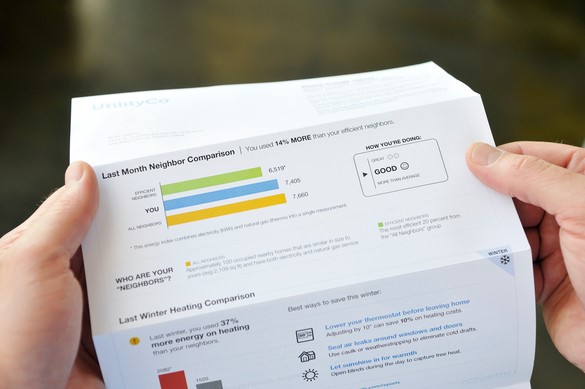8 ways to make bills customer friendly
Published: 24/03/17
The value of well-designed bills cannot be underestimated. Bills are the most regular communication you have with your customers and, unlike advertising mailshots, bills are opened and read 95% of the time, making them one of the most engaging ways for businesses to stay in touch with their clients.
As an efficient means of communication, bills are hard to beat. However, when done badly they can create or reinforce negative attitudes towards utility companies. Because bills are sent out regularly, that negativity has the potential to be reinforced on a monthly basis.
Bills are most likely to have a negative impact on customers if they are difficult to understand or if they contain news of unexpectedly high charges. This is because high or confusing bills can make the customer feel as though they have lost control of their finances.
Whilst unexpectedly high bills aren't solely a design matter, this can be mitigated by good design. And when it comes to the easy comprehension of bills, design is everything.
How can utility companies make their bills work better for customers?
1. Put important information first
Customers want their bills to give them useful information at a glance, and the single most useful piece of information is the amount they are being asked to pay.
The overall charge should be prominent on the front page of the bill, presented in a clear and easy to understand format.
2. Break down information
Once a customer knows how much they need to pay, they will want to understand why they owe that amount. It's vital that a breakdown of the overall total is clearly presented. Getting the balance right is important here: too much information can just confuse further. Avoiding technical terminology is important too: remember that customers shouldn't need to understand the intricacies of utilities to understand their bill.
3. Use the front for important information
There are two sides to every bill, and they should both be used to best effect. Important information such as the billing amount, initial breakdown of charges and current tariff information should be on the front of the bill. Less vital and more detailed information can be on the back.
4. Use graphics and visual aids
The brain can process visual imagery thousands of times faster than the written word, so it makes sense to use graphs and charts in your bills to present useful information as quickly as possible. Colour images also have the advantage of brightening up the bill, making it appear a less formal and intimidating document.
5. Choose easy-to-read fonts and sizes
Everybody receives utility bills regardless of their own capabilities. This means that billing information is sent to people who may find it hard to read small print or have difficulties with reading.
Bills should use clear fonts of an appropriate size to make for easy reading. Important information should be large, highlighted or bold to make it stand out from the rest of the text.
6. Avoid jargon
Few things create a barrier between a business and their customers more rapidly than the use of jargon. Because we work in the utility industry everyday, it can be easy to forget that not everyone understands the words we use regularly at work.
7. Include easy-to-find contact details
If a customer thinks that there is a mistake on the bill, or if they don't understand the bill, most will immediately want to get in touch to find out more. If a company's contact details aren't easy to find, then the customer is likely to become frustrated as they have to spend more time confirming or understanding the bill.
8. Give customers options
As well as showing customers a breakdown of the bill, it makes sense to provide information about the ways they can reduce their bills in the future - for example, by changing their usage behaviour or switching tariffs.
If this information is clear, it will reinforce the customer's sense of being in control.
Speak to us!
Jendev has over two decades of experience designing utility billing solutions powered by Microsoft Dynamics NAV.
Contact us on +44 (0) 1534 505350 to discover the many ways we can help you with your utility billing.
B a c k t o K n o w l e d g e
